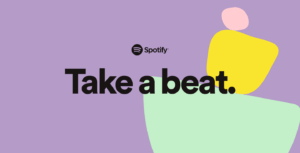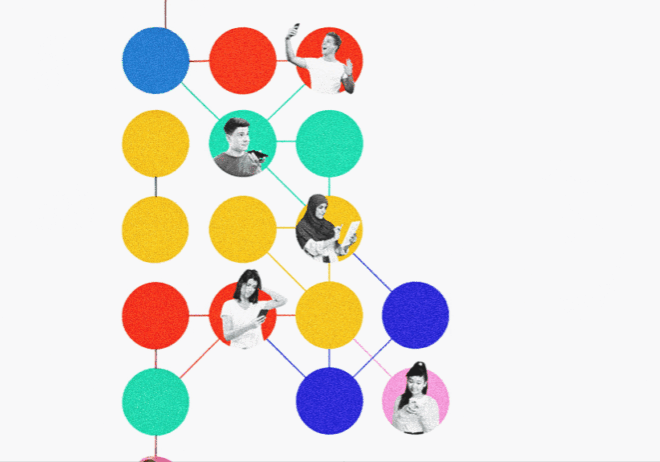
How Brands Are Tapping into Mindfulness and Mental Health in 2025
Mental health and mindfulness are no longer merely trendy terms in the wellness industry. In 2025, mental health has evolved from a topic of discussion to a standard. Consumers today seek something more—calm, connection, and emotional safety—in everything from the companies they trust to the content they consume to the goods they purchase.
What’s worse is that brands are reacting. To calm rather than to sell. A greater amount of “emotional utility” and less “aspirational luxury” Virtual AI companions that monitor your mood and silent ad breaks that let your pulse rate return to normal are just two examples of how mindfulness and mental health are swiftly becoming more popular. And the brands were on point? These are the brands that consumers are focusing on.
So, let’s unpack it: what does it really mean to help people feel better in 2025—and can brands actually do it right?
First, why do consumers expect this now?
This is the mood for 2025: tension is the norm rather than only a sporadic occurrence. Only 52% of Gen Zers and 58% of Millennials believe their mental health is “good or very good,” according to the most recent worldwide poll from Deloitte & Touche. Additionally, nearly 40% of Gen Zers say they suffer stress or worry all or most of the time, a situation that hasn’t significantly improved in the last year.
In another recent data point, 62% of young adults in the US said they live in a “constant state of worry” versus 38% of older generations. And this isn’t only a mental health narrative– this is also a brand narrative. Because when emotional overload is commonplace, consumers are rewarded for tone-down noise and gravitated to more honest, calm, and truly useful things.
So, the better question is not “should brands show up for mental health?” But rather, how could they not?
Can silence be a brand strategy?
One of the most audacious examples this year: Calm’s “Silent Disruption” ads.
During live-streamed events like the Super Bowl and Grammys, Calm aired 30-sec commercials in silence—there was no message, no logo, just ambient imagery with soft cues to breathe. In a sea of shouting calls to action, what a powerful silent flex. Calm viewers said they felt “instantly relaxed” after being interrupted and even thanked Calm for the momentary pause.
Why this is important: We’re in 2025. Attention is scarce; we are constantly overstimulated. Calm has proven there are times when no message is the better message.
Ad fatigue is real
And you can’t scroll away from it anymore!
Peak overload has been reached. Even the most well-considered advertisement is making people roll their eyes in 2025.
Not because advertisements are bad, but rather because they are so frequent, Gen Z and Millennials are tuning out. This person is realizing that less really is more.
“Take a Beat” is what Spotify wants you to do.
Since early 2025, Spotify’s “Take a Beat” initiative has been steadily expanding. It gives your brain a pause button. It offers customers tracks to help them reset during emotionally taxing times, such as breakups, exhaustion, or cycles of bad news
It’s more than simply a rebranding of well-being; it’s a reminder that music can be used for therapeutic purposes in addition to entertainment, and Spotify is working to make that available on demand.
Maybelline is bringing it
Maybelline’s #BraveTogether campaign, started a couple of years ago, gained major traction in 2025. The beauty brand went deeper this year and partnered with TikTok creators to focus on their personal anxiety experiences, in addition to showing how to access mental health resources in a more direct way via QR codes on packaging.
But here’s what really resonated. The tone. It wasn’t just superficial. It wasn’t a fake. Gen Z values relatability, authenticity, and rawness more than a solid foundation.
When AI asks, “How are you?”
In 2025, AI is not just answering questions but also doing the asking. Emotional intelligence is being built to support users in their emotional experience, not just their metrics—from fitness apps to banking apps. Woebot and Wysa are using conversational AI to help support users in emotionally stressful moments with real-time judgment-free responses that feel more like a friend than a feature.
Why is this important? Because emotional UX is now part of the brand experience. Customers want to be seen, not surveilled. When AI tools demonstrate empathy, this helps build trust. And trust (especially in a hyper-digitized world) is the currency that drives return engagement from customers.
The rise of micro-mental health
Mental wellness doesn’t always require a therapist’s couch or a 30-minute guided meditation. In 2025, more and more brands experiment with “micro-mental health”: tiny, intentional moments for people to reset themselves during the course of their day. This might come in the form of Duolingo sending colorful streak reminders or Uber sending a thoughtful affirmation while you wait for your ride. The general idea is to create emotional intelligence nudges within the small moments of the day.
Why this works: Micro-moments create a lower touchpoint for self-care. They meet people where they are, which is to say, on their phone, in their inbox, or in between meetings, and they offer a gentle check-in that feels light and helpful and not heavy and overwhelming. For brands, it’s a low effort, high-impact way to infuse a deeper connection without being too much
So, what will happen next?
Expect to see emotional design become a must-have. Brands in 2026 and beyond won’t only ask: “Does it work?” They will be asking, “How will this make someone feel?” Already, we are seeing a move to more emotionally responsive technology, ethically sound AI, and campaigns that prioritize presence instead of persuasion.
The brands that excel will be those who will give more than a nod to mental health, provide true mental health value—whatever that is: a five-minute breathing prompt, not ringing the bell on you when you’re calm, or simply less noise. In a world that continues to be always hitting go maybe your biggest brand statement will be to give back a moment to breathe.
Cut to the chase
Cut the noise. Encourage calm ads. If you are not helping people feel better about their situation, your brand is adding to the noise. In 2026, emotional value matters more than brand value. It’s time to show up—intentionally. Was it helpful for an article to utilize in a newsletter, social post, or as an outro for the article?




